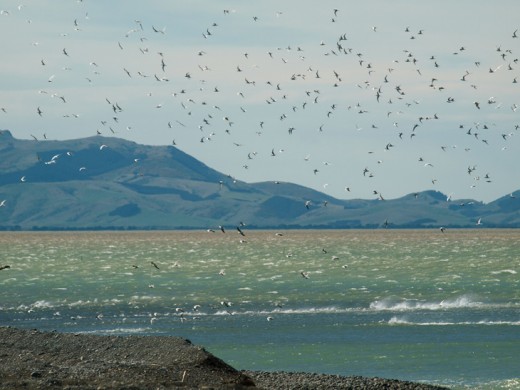Mahinga Kai
– South Island customary fisheries management
Several Tangata Tiaki/Kaitiaki have been appointed and trained throughout the Ngāi Tahu takiwā to operate under the provisions of the South Island customary fisheries regulations.
Why we should be responsible
It is important that we conserve our fisheries now before it is too late. Over recent years, fish stocks have been declining, placing the survival of some species seriously at risk. By claiming our rights to fish customarily we also accept responsibility to look after the fishery for its sake, as well as for the guaranteed future of the resource for ourselves and our mokopuna.
The South Island customary fishing regulations
These regulations recognise and provide for customary food gathering by Ngāi Tahu whānau. They also recognise the special relationship between Ngāi Tahu whānau and the places of importance for customary food gathering (including tauranga ika and mahinga mātaitai). Customary food gathering is neither commercial nor for pecuniary gain or trade.
The South Island Customary Fishing Regulations form the framework for customary fisheries management within the takiwā.
The key to the customary fishing regulations is that they empower the entire community through Tangata Whenua to manage their fisheries in a sustainable manner.”
Mō ake ake tonu!
How to work within the regulations
Prior to going customary fishing under the regulations, you must get an authorisation from your local Tangata Tiaki/Kaitiaki.
You must obtain the authorisation in person or make alternative arrangements with the Tangata Tiaki/Kaitiaki, such as an authorisation by phone or by email.
The health of the people relies on the health of the fishery.”
Contact details of your nearest Tangata Tiaki are contained in the above map.
Key things to remember with your authorisation:
- It must be kept in your possession. Or you must record the details of fishing and the authorisation number if you received an oral authorisation.
- You must catch only those species specified on the authorisation.
- Your catch is not to exceed the quantity specified.
- It is valid only for the date and area specified.
- You must report your catch back to the Tangata Tiaki/Kaitiaki within five days of fishing.
Why you need to record your catch
If you can no longer catch a feed of fish like you used to, it’s a good indication of over-fishing or habitat degradation. For this reason, it is important that Ngāi Tahu effectively manage the fishery in our rohe moana. By providing information to ensure the fisheries resources are not being overexploited, we will guarantee that we can always catch a feed for the whānau. A summary report of this catch information is provided to Fisheries New Zealand on a quarterly basis by Te Ao Tūroa. This information is used in the setting of the Total Allowable Catch (TAC) for each species.
Te Waihora
Te Waihora (Lake Ellesmere) is known as Te Kete Ika o Rākaihautū – The Fish Basket of Rākaihautū. For generations Ngāi Tahu has lived on its shores harvesting its rich bounty of fish and bird life and raw materials.

Mahinga Kai Web Series
Ngāi Tahu Mahinga Kai is a lifestyle series featuring 12 ten minute episodes filmed in the stunning landscape of Te Waipounamu. It captures the stories and essence of traditional food gathering practices passed down through the generations.